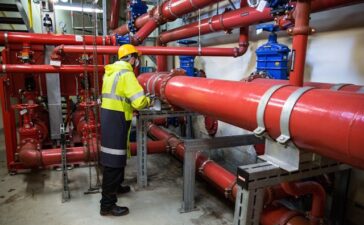Climate change is a significant challenge to modern agriculture and some of the changes that come with this are unpredictable growing conditions, extreme weather and shifting patterns in temperature. But commercial greenhouse operations will allow you to mitigate the impact of this by offering you a way to control the environment.
There are fluctuations
In temperature as a result of climate change that can reduce yields, disrupt the growth cycles of plants and increase the risk of heat stress. And extreme weather events such as severe heat waves, droughts that go on for a long time and intense storms can lead to crop damage and erosion of soil. These weather events are becoming more frequently and most often, they cannot be predicted which can lead to yield losses. When precipitation patterns change along with increased evaporation rates, it will lead to scarcity of water which is felt especially in arid and semi-arid regions. This will affect water management and crop irrigation. With the onset of warmer temperatures, favourable conditions are created for pests and diseases. This has led to an uptick of infestations and crop losses. In areas that experience extreme weather changes, you will also see soil erosion, salinization and nutrition depletion.

But with commercial greenhouses,
You can create a controlled environment where the climatic challenges can be overcome. This allows growers to optimise growing conditions. You can look into companies that provide products for protected crop farming and horticulture. You can visit their websites to learn more about their innovative solutions and how you can benefit from these. There are different types of greenhouses and they allow growers to regulate factors such as light levels, humidity, temperature etc. so that optimal growing conditions can be created for the crops instead of being controlled by weather fluctuations. Stable microclimates can be created with the use of ventilation, heating and cooling systems so that crop quality and yield can be maximised. You can also use closed loop irrigation systems like hydroponics and drip irrigation to minimise wastage of water. The nutrient solutions can be recirculated and rainwater can be captured so that water consumption can be reduced. And this can mitigate the effects of water scarcity on your crops.

A physical barrier is created by greenhouse structures
And this will protect your crops from pests and diseases so that you don’t need to rely solely on chemical fungicides and pesticides. You can turn to integrated pest management practices such as the crop rotation, beneficial insects etc. to maintain the health of your crops. You can also use soilless growing systems like aeroponics and hydroponics so that the need for soil can be eliminated. And this can mitigate issues related to soil degradation that is associated with traditional outdoor agriculture. Efficient nutrient uptake and crop productivity can be ensured with soilless cultivation. There are many advancements in greenhouse technology such as energy efficient designs and the integration of renewable energy that can minimise the environmental impact of operations.





